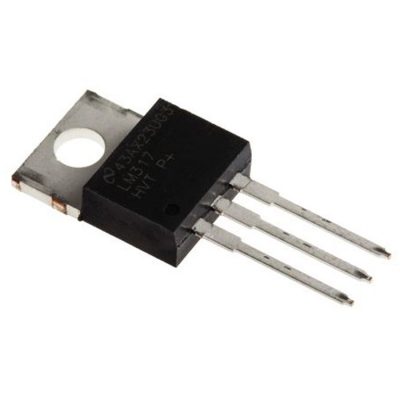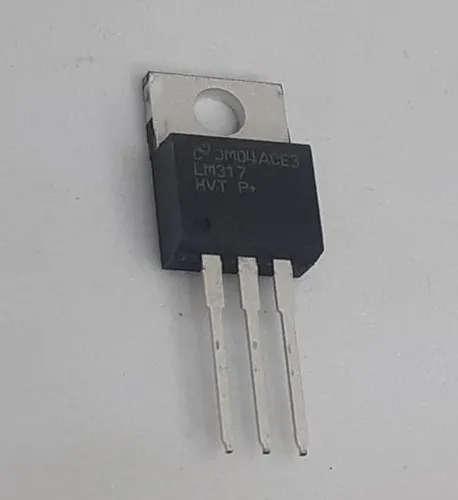LM317HV
Part Number: LM317HV
Manufacturer: Texas Instruments
Description: Linear Voltage Regulators
Shipped from: Shenzhen/HK Warehouse
Stock Available: Check with us
ICRFQ.com - Electronic Components Distributor in China Since 2003

Part Number: LM317HV
Manufacturer: Texas Instruments
Description: Linear Voltage Regulators
Shipped from: Shenzhen/HK Warehouse
Stock Available: Check with us
| Datasheet | |
|---|---|
| Category | Integrated Circuits (ICs) |
| Family | PMIC – Voltage Regulators – Linear |
| Manufacturer | Texas Instruments |
| Series | – |
| Packaging | Bulk |
| Part Status | Active |
| Regulator Topology | Positive Adjustable |
| Voltage – Output | 1.25 V ~ 57 V |
| Current – Output | – |
| Voltage – Dropout (Typical) | – |
| Number of Regulators | 1 |
| Voltage – Input | 4.2 V ~ 60 V |
| Current – Limit (Min) | 500mA |
| Operating Temperature | 0°C ~ 125°C |
| Mounting Type | Through Hole |
| Package / Case | TO-205AD, TO-39-3 Metal Can |
| Supplier Device Package | TO-3 |
We will examine the LM317HV, a positive voltage regulator with three terminals. It can deliver voltage ranging from 1.25V to roughly 37V and current greater than 1.5A. Only two external resistors are needed to regulate the output voltage. Both the load regulation norms and the line regulation standards have improved. The LM317 allows for complete overload protection, including current limiting and area protection.
All protective circuits will still function effectively even if their adjustment terminal is unplugged. We can also utilize it as a precise current regulator by adding a constant resistor between the LM317’s adjustment terminal and an output terminal. The many uses for the LM317 include constant regulators, battery chargers, microprocessor supplies, Ethernet switches, Femto base stations, IP phones, automatic LED lighting, hydraulic valves, power bank solutions, power quality monitoring, motor controllers, embedded systems, etc.
The LM317HV is an adjustable positive voltage regulator with three terminals that can supply currents of 1.5 A or more throughout a range of output voltages from 1.25 V to 57 V. The output voltage range can also be adjusted. To adjust the output voltage, it is just necessary to use two external resistors. The LMx17HV comes pre-packaged in typical transistor packages, which makes it simple to mount and manipulate the component.
The LM317HV features overload protection such as thermal overload protection, current limit, and safe area protection, all of which contribute to the blowout-proof nature of the device. Even if the adjustment terminal is severed, the overload protection circuitry can still perform its intended purpose in its entirety.
In most cases, capacitors are unnecessary; however, an input bypass is required if the device is located more than 6 inches away from the input filter capacitors. An output capacitor is not necessary to improve the transient response further but can be added if desired. Bypassing the adjustment terminal makes it possible to achieve rejection ratios of a very high ripple, which you can not with 3 traditional terminal regulators due to their inherent design limitations.
Because the regulator is floating and only observes the input-to-output voltage differential, it can control supplies with several hundred volts if the maximum voltage differential is not exceeded; the output must not be shorted to the ground.
Additionally, the LM317HV can function as a precision current regulator if a fixed resistor is connected between the adjustment and output terminals of the chip. One can create supplies with electronic shutdown by clamping the adjustment terminal to the ground. This also programs the output to 1.25 V, an area where most loads draw a small amount of current.

High input-output voltages do not allow for total output current. Enhances transitory response when optional. To increase output impedance and transient rejection, output capacitors in the range of F made of tantalum or aluminum electrolytic are frequently utilized. *Required if the device is farther away from the filter capacitors than 6 inches.
The use of a bypass capacitor at the input is strongly suggested. Input bypassing with a 0.1 F disc or 1 F solid tantalum should be adequate for most uses. Adjustment or output capacitors make the device more sensitive to the lack of input bypassing, but the values above will prevent any issues.
The LM317HV’s ripple rejection can be enhanced by connecting the adjustment terminal directly to the ground. As the output voltage is raised, the ripple is not magnified thanks to the bypass capacitor. 80 dB of ripple rejection may be achieved at any output level using a 10 F bypass capacitor. Increases in ripple rejection capacitance beyond 10 F have no noticeable effect at frequencies over 120 Hz. Safety diodes are occasionally required when the bypass capacitor is employed to avoid device damage caused by the bypass capacitor discharging through internal low current channels.
Solid tantalum capacitors are often considered the most reliable and effective option. Even at high frequencies, the impedance of solid tantalum capacitors is minimal. A solid tantalum capacitor has the same capacitance as 25 microfarads of aluminum electrolytic at high frequencies. Some ceramic capacitors show a significant drop in capacitance at frequencies of about 0.5 MHz, yet they are still useful at higher frequencies. Due to this, a 0.01 F disc may function better as a bypass than a 0.1 F disc.
Even though the LM317HV is stable even in the absence of output capacitors, there is a threshold capacitance value beyond which external capacitance will cause the LM317HV to ring excessively, as is the case with any feedback circuit. When the value is between 500 pF and 5000 pF, this happens. An output 1 F solid tantalum (or 25 F aluminum electrolytic) capacitor can cancel out this fluctuation and keep things steady. Increasing the load capacitance by more than 10 F does not affect the loop stability or output impedance.
It is occasionally required to utilize protection diodes when working with external capacitors and an IC regulator to prevent the capacitors from discharging at current low points. When shorted, the intrinsic series resistance of most 10 F capacitors is soft enough to deliver 20A spikes. Short as the surge may be, it nonetheless carries enough power to destroy some components of the integrated circuit. If you have a regulator with an output capacitor and you short the input, the capacitor will discharge into the regulator’s output. Discharge current is proportional to VIN’s rate of decline, the regulator’s output voltage, and the capacitor’s value.
This discharge channel in the LM317HV goes through a sizable junction that can easily handle a 15A surge. Other kinds of positive regulators don’t have this limitation. Diodes are unnecessary for output capacitors smaller than 25 F. This allows the adjustment terminal bypass capacitor to discharge via a low current junction. When the input or output is shorted, discharge occurs. Within the LM317HV, it is a 50 resistor that serves to cap the highest possible discharge current. No protection is necessary if the output voltage is under 25V and the capacitance is less than 10 F.
We hope the information presented in this article will assist you in gaining a deeper comprehension of the device mentioned above and how it operates. If you have any questions, please don’t hesitate to leave them in the comment sections below, and we will do our best to respond to them.
For more details on LM317HV IC, contact us at ICRFQ. We are the best electronic components distributors in China.
WhatsApp us